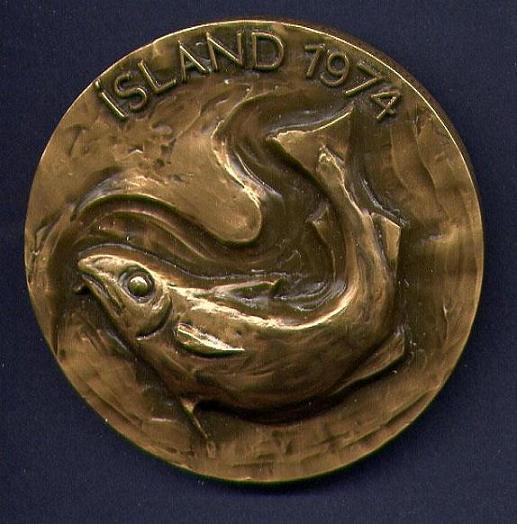"The Scorpion incident did not occur in a vacuum. Throughout the 1950s and 1960s, scores of top-secret U.S. reconnaissance aircraft were attacked and some were shot down while attempting to spy on Soviet military capabilities. The U.S. Navy conducted aggressive tactics using submarines to spy on their Soviet counterparts. The Soviets in turn used spies and their military allies to wage limited war against America, as new information about the seizure of Pueblo shows. A popular historical theory of the Cold War is that fear of nuclear war deterred the United States and the Soviet Union from engaging in a direct military confrontation. What the Scorpion incident suggests is that rather than preventing such confrontations, it merely drove them into the shadows." - MHQ Magazine, The Quarterly Journal of Military History
A
popular historical theory of the Cold War is that fear of nuclear war
deterred the United States and the Soviet Union from engaging in a
direct military confrontation. What the Scorpion incident suggests is
that rather than preventing such confrontations, it merely drove them
into the shadows. - See more at:
http://www.historynet.com/the-uss-scorpion-buried-at-sea.htm#sthash.PHm29AR2.dpu
Historical Examples
November 1863 - Not making the news, The
CSS Hunley's crew were volunteers, a tradition that would become an
unattributed trademark of the elite U.S. Submarine Force owing to
the insight of
C.S.A.
Gen. P.G.T. Beauregard. The
Hunley's final crew perished mysteriously after a successful attack sinking the
USS Housatonic in 1864. Development, preparations and operation of the Hunley had been secretive for enhancement of the Confederate naval effort during America's
War between the States.
Interim - Not making the news, events recalled by named active duty submariners and Top Secret SOSUS sailors from immediately prior to or not long after
USS Scorpion was reported overdue on May 27, 1968 (see
Interim Events in the next section).
May 27, 1968 -
Making the news, or not? - USS Scorpion (SSN 598) and its 99-man crew failed to return as scheduled to Norfolk, VA.
May 1986 - Making the news, USS Ray (SSN-653) surfaced at the North Pole along with sister ships
USS
Hawkbill (SSN-666) and
USS Archerfish (SSN-678),
the first time three
attack submarines had ever surfaced at the pole together.
Interim Events (unofficial)
Not making the news:
April 1983 - "All I know is that long before she was actually due in Norfolk we had organized a search effort. ...This went on for quite some time, until it was quite obvious that she was long overdue arriving in Norfolk. ..."Well, it was classified more because we didn't know where she was or what had happened and we were just trying to find out. It was no sense making a big brouhaha over something we really couldn't explain." -Admiral Schade (USN-ret)
(snips) - from Ed Offley's article:
Read it all: The USS Scorpion Buried at Sea, The HistoryNet.com, August 26, 2009
Numerous participants in the Scorpion search mission confirm that the navy actually located and photographed the submarine's wreckage nearly five months before Mizar's "official" discovery on October 28. "We found that submarine…in the early part of June," said Bill Sebold, a crewman aboard Compass Island, a ship with advanced sonar capabilities that used multibeamed sounding instruments to create detailed contour maps of the deep-ocean floor. His account is echoed by several other crewmen on the ship, including Bill D'Emilio, who said unequivocally, "I was on board the Compass Island when we found the Scorpion."
One former SOSUS operator, Vince Collier, came forward decades later to tell in chilling detail how he and other sailors in SOSUS School were shown a bootleg copy of the tape that graphically depicted the death of Scorpion. ...The instructor who played the tape, Ocean Systems Technician Analyst First Class Richard Falck, confirmed the details in an on-the-record interview. Former SOSUS officials revealed that within hours of the sinking, the navy raided SOSUS facilities worldwide to seize all evidence—hydro-acoustic tapes, "lofargram" printouts, and documents—that pointed to the Soviet attack on Scorpion. - Ed Offley
Ed Offley
Captain Peter Huchthausen, a former U.S. naval attaché to the Soviet Union during the early 1980s, revealed during a series of interviews with me that he was convinced the U.S. and Soviet navies had quickly reached a highly classified accord soon after the Scorpion sinking.
-
Ed Offley
Submarines are always silent and strange.
Captain
Peter Huchthausen, a former U.S. naval attaché to the Soviet Union
during the early 1980s, revealed during a series of interviews with me
that he was convinced the U.S. and Soviet navies had quickly reached a
highly classified accord soon after the Scorpion sinking. - See more at:
http://www.historynet.com/the-uss-scorpion-buried-at-sea.htm#sthash.PHm29AR2.dpuf
Labels: CSS Hunley, untold, USS Ray, USS Scorpion



